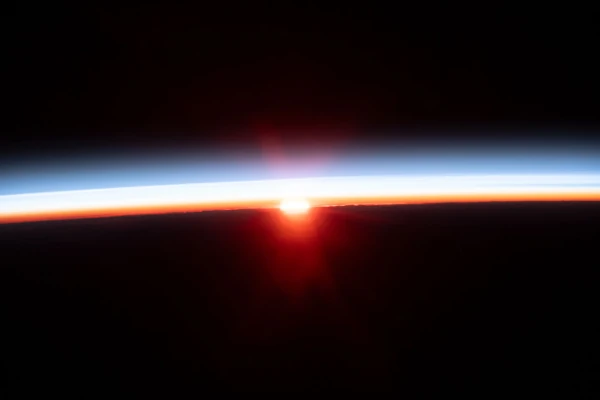
Earth's atmosphere is a vital gaseous envelope surrounding the planet. Composed mainly of nitrogen (78%) and oxygen (21%), with traces of other gases, this thin layer—only about 100 km thick—plays multiple vital roles: thermal regulation, protection against harmful radiation (solar and cosmic), shielding from small meteorites, and serving as a reservoir for gases necessary for respiration and photosynthesis. Additionally, Earth's atmosphere enables meteorological and climatic exchanges. It acts as an invisible shield while providing stable conditions for the biosphere.
N.B.:
The Hadley, Ferrel, and Polar cells form a closed atmospheric circulation system that redistributes heat from low to high latitudes, with direct cells (Hadley and Polar) and an indirect cell (Ferrel) functioning as a global atmospheric gear system.
Earth's atmosphere is divided into several distinct layers, each with unique physical and chemical characteristics:
The troposphere extends from the surface to about 8–15 km in altitude. This is the layer where all weather phenomena occur. Temperature decreases with altitude at a vertical thermal gradient of about 6.5°C per kilometer. The upper boundary of the troposphere is called the tropopause.
The stratosphere extends from the tropopause to about 50 km in altitude. Unlike the troposphere, temperature increases with altitude due to the absorption of UV rays by the ozone layer. This thermal inversion creates a stable zone that limits vertical air movements.
The mesosphere extends from 50 km to about 85 km in altitude. It is the coldest layer of the atmosphere, with temperatures dropping as low as -100°C. Most meteors burn up here due to friction with atmospheric particles.
The thermosphere extends from 85 km to 600 km in altitude. Temperatures rise considerably (up to 1500°C) due to the absorption of high-energy solar radiation. This is the layer where polar auroras occur and where the International Space Station and low-orbit satellites orbit.
The exosphere is the outermost layer, extending from 600 km to the boundary with interplanetary space. Particles are so sparse here that they can escape into space. This region marks the gradual transition between Earth's atmosphere and the vacuum of space.
| Atmospheric Layer | Altitude (km) | Temperature | Main Phenomena | Main Role |
|---|---|---|---|---|
| Troposphere | 0 – 12 (≈8 km at the poles, ≈15 km at the equator) | Decreasing (~−6.5°C/km) | Weather, clouds, winds | Earthly life, water cycle |
| Stratosphere | 12 – 50 | Increasing (up to 0°C) | Ozone layer, jet streams | UV protection, stable circulation |
| Mesosphere | 50 – 85 | Decreasing (down to −90°C) | Shooting stars, noctilucent clouds (composed of ice crystals and visible only during twilight) | Protection against meteors |
| Thermosphere | 85 – 600 | Increasing (≈500 – 1500°C, depends on solar activity) | Polar auroras, satellites, ISS | Auroras, ionization, satellites (telecommunications, observation) |
| Exosphere | 600 – 10,000 | Variable (very rare gas, the concept of temperature becomes ambiguous as molecules are very sparse and do not heat up like a dense gas) | Atoms escaping into space | Gradual transition to space, low density |
Sources: NOAA – JetStream – Atmosphere and NASA Climate – Earth's Atmosphere: A Multi-layered Cake.